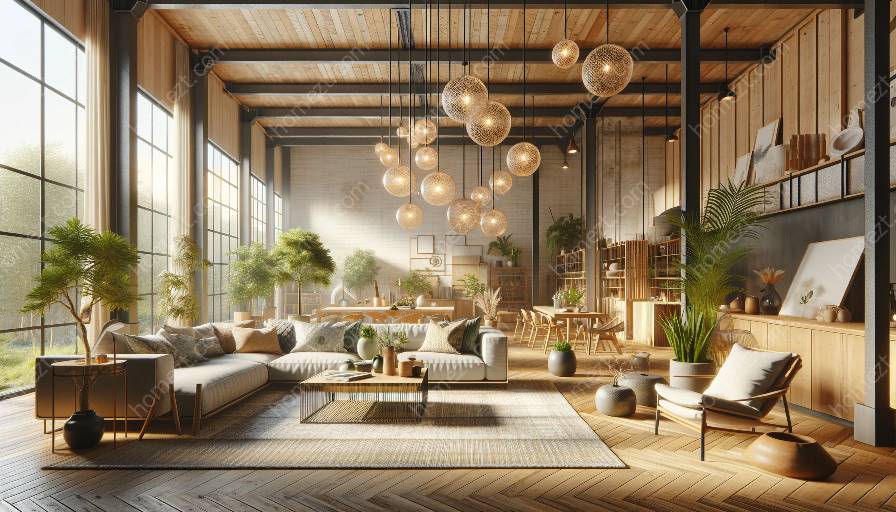Commercial interior design is not only about creating visually appealing spaces but also about promoting sustainability and eco-friendliness. The integration of sustainable design principles into commercial interiors is essential for reducing environmental impact and creating healthier and more productive workplaces. In this comprehensive guide, we will explore the key strategies and principles for integrating sustainable design into commercial interior spaces, merging the worlds of sustainability and stylish interior design. From eco-friendly material selection to energy-efficient lighting and innovative space planning, we will delve into essential aspects of sustainable and eco-friendly commercial interior design.
The Importance of Sustainable Design in Commercial Spaces
Sustainable design in commercial interior spaces is vital for several reasons:
- Environmental Impact: Commercial spaces have a significant impact on the environment due to their energy consumption, material usage, and waste generation. Sustainable design helps minimize this impact by employing eco-friendly practices and materials.
- Occupant Health and Well-being: A sustainable interior environment promotes better indoor air quality, natural light, and overall well-being for the occupants, leading to increased productivity and satisfaction.
- Corporate Social Responsibility: Incorporating sustainable design reflects a commitment to environmental stewardship and responsibility, enhancing the reputation of the business.
Key Principles for Sustainable Design in Commercial Interior Spaces
1. Eco-Friendly Material Selection
Choosing sustainable materials is a fundamental aspect of eco-friendly interior design. This includes utilizing recycled and renewable materials, as well as products with minimal environmental impact throughout their life cycle. From flooring and wall coverings to furniture and finishes, selecting materials with eco-friendly certifications can significantly enhance the sustainability of the commercial space.
2. Energy Efficiency and Lighting Design
Implementing energy-efficient lighting systems and incorporating natural light into the interior design not only reduces energy consumption but also enhances the visual comfort and well-being of occupants. LED lighting, daylight harvesting, and smart lighting controls are effective strategies for achieving energy efficiency in commercial interiors.
3. Indoor Air Quality and Ventilation
Ensuring proper ventilation and incorporating low-emission materials contributes to better indoor air quality, creating a healthier and more comfortable environment for occupants. Consideration of air purification systems and natural ventilation can further enhance indoor environmental quality.
4. Sustainable Space Planning and Flexibility
Efficient space planning and flexible layouts enable the optimization of space utilization while minimizing the need for additional construction and resources. Adaptable furniture and modular solutions promote versatility and longevity, aligning with sustainable design principles.
Innovative Strategies for Integrating Sustainability into Commercial Interiors
1. Biophilic Design Integration
Integrating elements of nature and biophilic design principles into commercial spaces can enhance the connection to the natural environment, reduce stress, and improve the overall well-being of occupants. Incorporating indoor plants, natural materials, and views of nature can create a more sustainable and harmonious interior environment.
2. Water Efficiency and Conservation
Implementing water-saving fixtures, efficient irrigation systems, and utilizing water-recycling technologies in commercial interior spaces can significantly reduce water consumption and contribute to environmental conservation efforts.
3. Waste Management and Recycling
Designing for waste reduction and implementing recycling programs within commercial spaces can minimize the environmental impact of waste generation. Incorporating designated areas for recycling and utilizing recycled materials in interior design further supports sustainable waste management practices.
Case Studies and Best Practices in Sustainable Commercial Interior Design
Exploring real-world examples and successful projects that exemplify sustainable design integration in commercial spaces provides valuable insights and inspiration for designers and businesses looking to embark on sustainable interior projects. Case studies showcasing adaptive reuse of existing structures, innovative renewable material applications, and energy-efficient design solutions can offer practical guidance for implementing sustainable strategies in commercial designs.
Conclusion
The integration of sustainable and eco-friendly design principles into commercial interior spaces is not only a responsible environmental choice but also a strategic decision that contributes to the well-being of occupants and the overall success of businesses. By prioritizing eco-friendly material selection, energy efficiency, indoor environmental quality, and innovative sustainability strategies, commercial interior designers can create stylish, functional, and environmentally responsible spaces that align with the principles of sustainable and eco-friendly interior design.


























